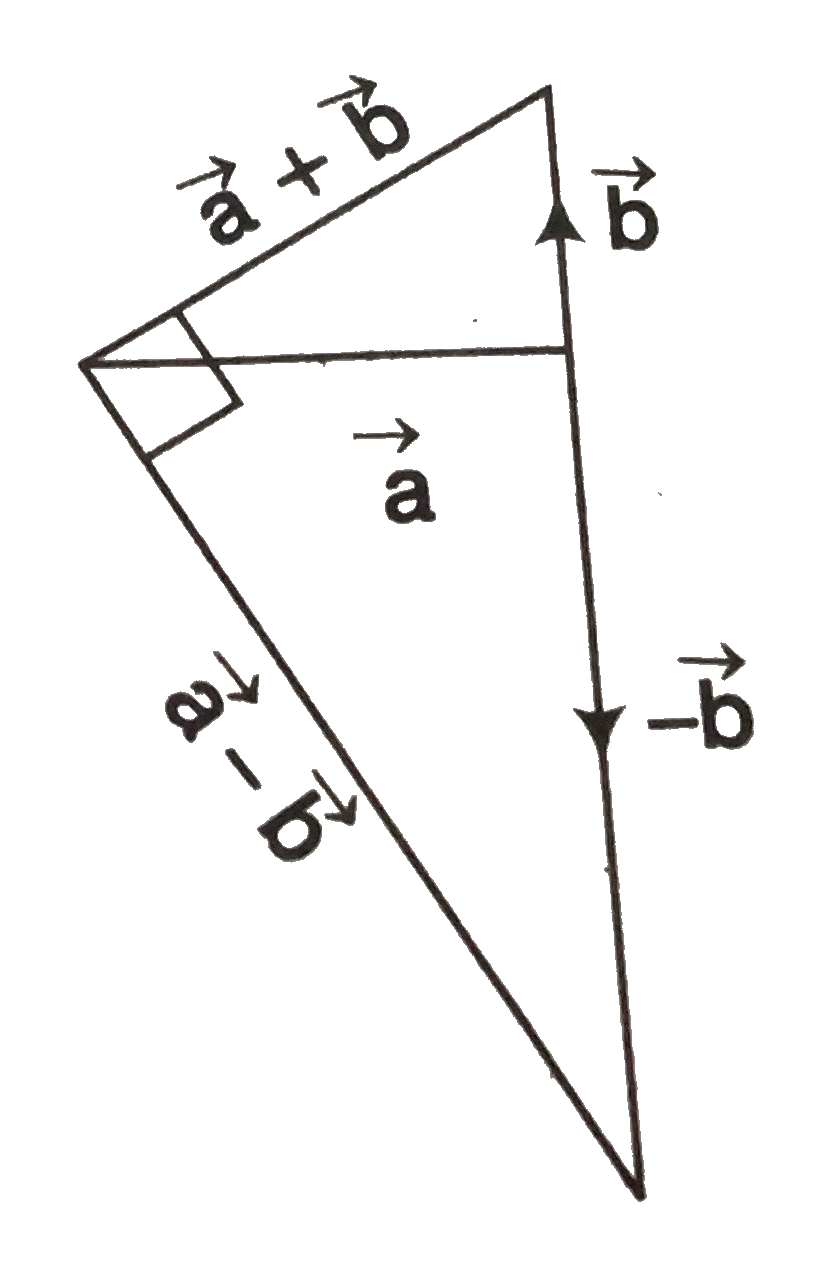The formula (→a+→b)2=→a2+→b2+2→a×→b is valid for non-zero vectors →aand→b.
(→a+→b)2=(→a+→b).(→a+→b)
=→a2+→b2+2→a.→b

Topper's Solved these Questions
Similar Questions
Knowledge Check
- Question 1 - Select One
If →aand→b are non-zero, non-collinear vectors such that |→a|=2,→a⋅→b=1 and angle between →aand→b is π3. If →r is any vector such that →r⋅→a=2,→r⋅→b=8,(→r+2→a−10→b)⋅(→a×→b)=4√3 and satisfy to →r+2→a−10→b=λ(→a×→b), then λ is equal to :
A12B2C14DNone of these
The vector →a+→b bisects the angle between the non-collinear vectors →aand→b, if……..
View SolutionIf →a and →b are any two vectors , then prove that ∣∣→a×→b∣∣2=|→a|2∣∣→b∣∣2−(→a.→b)2=∣∣∣→a.→a→a.→b→a.→b→b.→b∣∣∣ or ∣∣→a×→b∣∣2+(→a.→b)2=|→a|2∣∣→b∣∣2 (This is also known as Lagrange identily)
View SolutionThe vector (→a−→b)×(→a+→b) is equal to (A) 12(→a×→b) (B) →a×→b (C) 2(→a+→b) (D) 2(→a×→b)
View SolutionIf ∣∣→a+→b∣∣=∣∣→a−→b∣∣, then the vectors →aand→b are orthogonal
View SolutionLet →a,→band→c be the non zero vectors such that (→a×→b)×→c=13∣∣→b∣∣|→c|→a. if theta is the acute angle between the vectors →band→a then theta equals (A) 13 (B) √23 (C) 23 (D) 2√23
View SolutionShow that the vectors 2→a−→b+3→c,→a+→b−2→cand→a+→b−3→c are non-coplanar vectors (where →a,→b,→c are non-coplanar vectors)
View SolutionThe position vector of foru points A,B,C,D are →a,→b,2→a+3→band→a−2→brespectively.Expessthe→−−→rsvec(AC), vec(DB), vec(BC) and vec(CA)∈termsofveca and vecb.
View Solution

